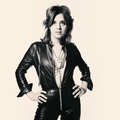JOHN ENTWISTLE
By Strings Direct – 29 August, 2023
PLAYER SPOTLIGHT
“You don’t get that initial twang if you use the strings again.”
1977 Guitar Player Magazine

This instalment of the spotlight focuses the energy on the lower EQ register and brings our attention to a household name and a rock 'n' roll legend of the sub frequencies.
It’s with great sobering irony I begin this feature on this particular date as it marks the 19th year anniversary for the passing of this legend to the day, completely coincidental but a definitive spiritual vibration was felt.
An enigmatic journey with an amazing and very well detailed history regarding strings choice and the necessity of preference, we look to discover “The Ox”!
Mr John Alec Entwistle .
"I just wanted to play louder than anyone else”
J.Entwistle for Paul Rees - Classic Rock
The Third Step to Bass 🎸
“He was the best rock bass player period. He changed the role and sound of the electric bass like Hendrix changed the sound of the electric guitar. I don’t think he was unappreciated. His fans, myself one for 37 years, are many and varied and devoted. The greatest pleasure in going to see him play was watching him stand so casually still and fly so high into the heavens simultaneously.”
Goodbye, John Alec Entwistle
“We Hardly Knew Ya” By Steve Patt and Rick Pascual
A humble setting in Chiswick at an almost dystopian time during the end of the Second World War on 9th October 1944 a young musical craftsman was born in the Hammersmith Hospital London.
As it was back then John was born into a musical family with a musical background it was of course not uncommon. His mother was a piano player and his father a trumpet player so music was part of his development as a young man.
The initial encounter with music was prompted through piano lessons at the age of seven, this wasn't something well digested by a young man who was a very inquisitive musical mind, he felt the teacher was an old duddy and that the traditional ways were just not to his liking at the time - being an adolescence of course.

John having a structured and dedicated personality stayed with the instrument for a few years but then moved at the age of 11 to the French horn.
Although these two instruments seem somewhat irrelative to his primary instrument of choice they actually played a fundamental part on his expression and dynamic characteristics when delivering on the bass guitar.
“Well, I started off on piano when I was six, and then went on to the trumpet when I was eleven, and French Horn. It's not such a difficult transition once you've got a musical sort of background to work from. I more or less taught myself to play the bass, by playing along with Duane Eddy records and any Rock records I could get hold of.
The most difficult transition was stopping being a soloist on trumpet and French Horn and becoming a background sort of bass player. I didn't particularly like that role, so I said I'll have to change that.”
http://www.classicbands.com/JohnEntwistleInterview.html

Entwistle also discovered the trumpet at this very same time; it was of course his father's instrument. His mother and father separated by the time he was 14, this impacted his personality and he became increasingly more reserved and withdrawn, later to be known as “The Quiet One” by those who know him and that he knew of him.
The trumpet and French horn weren't really instruments of the time during the late 50s leading into the swinging 60s, it just didn't fit into the current revolution of rock 'n' roll; so as much as John tried he couldn't quite get it to sit well in that context.
“I just wanted to be louder. I got really very irritated when people could turn up their guitar amps and play louder than me. So, I decided that I was going to play guitar,”
Steve Valvano - https://www.culturesonar.com/john-entwistle-and-the-year-of-the-ox/
Recognising that guitarists at the time were ten to the dozen and that this was the instrument not just of choice but of fashion John had a wider perspective on things. 🤔
A significant influence at the time was Mr Duane Eddy, John was heavily into his music and really absorbed his thumping rhythmic instrumentals that had catchy melodic lines.
Physically mismatched for guitar, John was a broad kid, 6 foot tall and had strong thick fingers - these would later be the key to a further professional nickname - “Thunderfingers”.
He decided that he had a real pull towards the four string instrument, the bass guitar which, at the time in the early 60s was a relatively new instrument with an uncertain future - as we previously covered with John Paul Jones, and how he was told to not pursue the bass guitar as it was a phase and would fade out eventually and be forgotten about.

Hailing from a modest and non-privileged background John’s desire for the bass guitar couldn't be fulfilled relatively easily as bass guitars were hard to come by in the UK at this time and were incredibly expensive.
And so it was a very intuitive and determined young man who set out to build his own instrument - incredible really when you put it into perspective.
“He purchased a large piece of mahogany and asked a local carpenter to prepare and shape the body like the popular Fender Precision model. The instrument was shaped with a Fender neck, but the frets were based on Hofner’s smaller violin-shape (think McCartney), leaving eight inches of unfretted wood at the top of the neck. It looked weird. “That (bass) looked like a football boot with a neck sticking out of it,” Roger Daltrey would recall. John did all the wiring for the pickups, along with painting the finished body. The homemade instrument ended-up sounding … pretty good.”
Steve Valvano - https://www.culturesonar.com/john-entwistle-and-the-year-of-the-ox/
The Detours… The Who? 🇬🇧

While in a process of musical experimentation and discovery John Entwistle met a fellow and just as inquisitive musician: a young Pete Townshend.
It was definitely a meeting of the minds, John was on trumpet duties and Pete was on banjo and they began to partake outside of the school band and pursued blues and traditional jazz style numbers.
Once Entwistle had finalised his bass creation and things really started to move and the pair stumbled upon a very stern but influential character a year their senior.
Roger Daltrey was one of the the school "faces" and was notorious for his strength of character and volatile temper. He was a budding guitarist and player in his own band The Detours. Roger was fascinated and intrigued when he noticed John and his handcrafted instrument.
Mutual admiration and respect was is the initial footing, that we later discover was the early formation of the now worldwide renowned rock 'n' roll band The Who 🤘.
The pre-dated incarnation of the Rock 'n' Roll Hall of Fame inductees 'The Who' was in fact The Detours - Roger Daltrey’s musical skiffle based outfit.
Upon arrival and introduction of the enigmatic Keith Moon on the drums the band was renamed “The High Numbers”. Which then transcended into the legendary and unforgettable landmark musical icon known as “The Who”.
The British invasion - forever imprinting on musical history.
The Who have become pioneers of their time and are considered one of the most influential rock 'n' roll bands of the 20th century selling well over 100 million records worldwide.
A band not just measured by their success but by their influence and continued presence within popular music.
The drumming of Keith Moon and the Bass playing of John Entwistle is still analysed to this day as revolutionary.

Roger Daltrey and Pete Townshend carry their own level of influence helping develop the genre of rock opera and Pete developed colossal attack of full-tilt rock 'n' roll at its loudest.
The Who were predominately deemed one of the loudest bands around. This is mostly down to the fact of the competitive nature between Pete Townshend and John Entwistle, this subsequently led to the continuing development of the backdrop of rock 'n' roll known also as the “Marshall Stack”.

The furious development and intricate space within the dynamic of The Who created a window of opportunity for John Entwistle to express himself as more than just part of the rhythm section.
“John was a remarkable player,” says Bob Pridden, The Who’s long-serving soundman. “It was Bill Wyman who said he was the Jimi Hendrix of the bass, which is a good way of explaining what he did. The sound he got was unique. If you listen now to the early Who records, the bass is the lead instrument. And he was bloody loud, too.”
Bob Pridden on J.Entwistle - Classic Rock Magazine
String Evolutionary Engineer
Of all the players we've covered in the series both bass players and guitar players we've rarely come across a player that has such a well-documented and intricately detailed string history...
John was massively particular about his sound and was extremely analytical about the overall presentation of what he was trying to convey.
Never before seen, such incredible interaction from an artist in regards to string choice and how much of an integral part the correct strings can be in terms of both tonal projection and technical function and adaptability.
In search of a certain sound, a certain attack, feel and overall setup, John laid the foundations along with the legendary James How of Rotosound.
From the November 1977 Guitar Player:
“I like my strings on the other side of the frets.”
He played with an exquisitely low action and always aimed to continually perfect the setup and playability of his instrument.
“The John Entwistle Connection - Rotosound RS66

John Entwistle begins a long association with Rotosound including helping to develop the RS66 Swing Bass sets. Entwistle recounts the story:
“It was in 1966 and I was looking for that Danelectro sound again. I tried everybody’s strings but the E and the A’s just didn’t work. It was the same with Rotosound but there was something about them that was almost there but not quite. To solve the problem I got in touch with James How and told him his D and G strings were great but the E and A didn’t vibrate properly. He told me to take my bass along to Rotosound and have some strings made until they got it right.
“A couple of days later they called and asked if I objected to them putting my name to the strings and selling them commercially. I told them I didn’t mind as long as they kept me supplied with free strings! But then we had to do the same with medium and short scale strings because I had loads of different basses by then. Those strings, the RS66 sets, were the first that vibrated properly.”

The quotes and content on John Entwistle are extensive and they keep coming! What a great insight into one of the pioneers of contemporary bass guitar.
“From the November 1977 Guitar Player (read an excerpt of the article):
Unlike the vast majority of bassists, John has his strings (Rotosounds) changed before every concert in order to attain maximum crispness. The task is another of Alan Rogan’s responsibilities. Entwistle says, “You don’t get that initial twang if you use the strings again. You can always turn up your treble control to get it like the day before, but then you end up getting a lot of whistle.” Entwistle’s action is probably the lowest of any modern electric bass player. As John laughs, “I like my strings on the *other* side of the frets.”
As we can see Rotosound and John Entwistle made giant leaps in the world of bass guitar strings.

https://www.rotosound.com/players/
It would take something quite astonishing to break the link and believe it or not, it did happen for a period…
“1989–2001:
Maxima Gold gold-plated handmade strings, changed daily.
From the August 1989 Guitar Player
The big news is that Rotosounds will not be accompanying the Buzzards on their transcontinental flight. After pioneering the development of roundwound strings with that company in the ’60s and in the process becoming virtually synonymous with the name and the sound, Entwistle has switched to handmade Maxima gold-plated strings. “They sent me a set to try out, and I really liked them. I found that with the proper action on my basses, I could tune the E string as low as an A and still achieve a true tone. I tried to get Rotosound to explore that direction a year ago and they ignored me, and then came out with a set specially gauged by Billy Sheehan that will tune down to a D! So I got fed up. Billy Sheehan and Mark King can sell Rotosounds; I’m very happy with Maximas.”
From April 1995 Bassist interview
“I had been trying to find a decent low B string for the bass and we experimented with Rotosound but didn’t have any luck. A lot of our songs at the time were in C and D, not good keys for bass because you can’t get a good hit of a low C or D, although it isn’t as bad as, say, Eb. I tried de-tuning the Rotosound strings but they lost all their tonal quality. I was then given some gold-plated Maximas to try out about six years ago. While I was putting the first set on and tuning up, I played a low C and it was perfect. It still had the same amount of top end and the tonal quality hadn’t dropped. They had developed a new type of core which was hexagonal or octagonal and you could tune an E string down to a low A and it would still vibrate well. It was those de-tuning possibilities that turned me on to Maxima, plus being gold plated, they looked better with gold hardware and didn’t disappear under the lights on stage.”

After a fairly long and loyal stint with Maxima (Optima) John finally returned to his old faithful and revisited old comforts in the RS66’s from 2001-2002 which was the untimely year of his very Rock & Roll passing . 🎸

- The Man
- The Musician
- The Artist
- The Educator
- The Revolutionary
- The Insightful
- The Legend
Mr John Entwistle of The Who 🇬🇧
To leave you with a final thought of inspiration and genius. An isolated bass guitar track, absolutely mind blowing!
Tab that out !!! 🤘
* * * * *
REFERENCES
https://www.thewho.com
https://www.allmusic.com/artist/john-entwistle-mn0000226331/biography
https://en.wikipedia.org/wiki/John_Entwistle
https://www.thewho.net/whotabs/gear/bass/bassmisc.html
https://www.rollingstone.com/music/music-features/who-bassist-john-entwistle-the-ox-book-biography-976804/
http://www.classicbands.com/JohnEntwistleInterview.html
https://www.vintageguitar.com/22212/john-entwistle/
https://www.loudersound.com/features/john-entwistle-i-just-wanted-to-play-louder-than-anyone-else
https://www.loudersound.com/features/john-entwistle-i-just-wanted-to-play-louder-than-anyone-else
https://faroutmagazine.co.uk/the-who-john-entwistle-bass-isolated-tracks-genius/
https://www.thetapesarchive.com/john-entwistle/
https://www.houstonpress.com/music/things-to-do-read-the-john-entwistle-biography-the-ox-11460503
https://www.rotosound.com/players/





